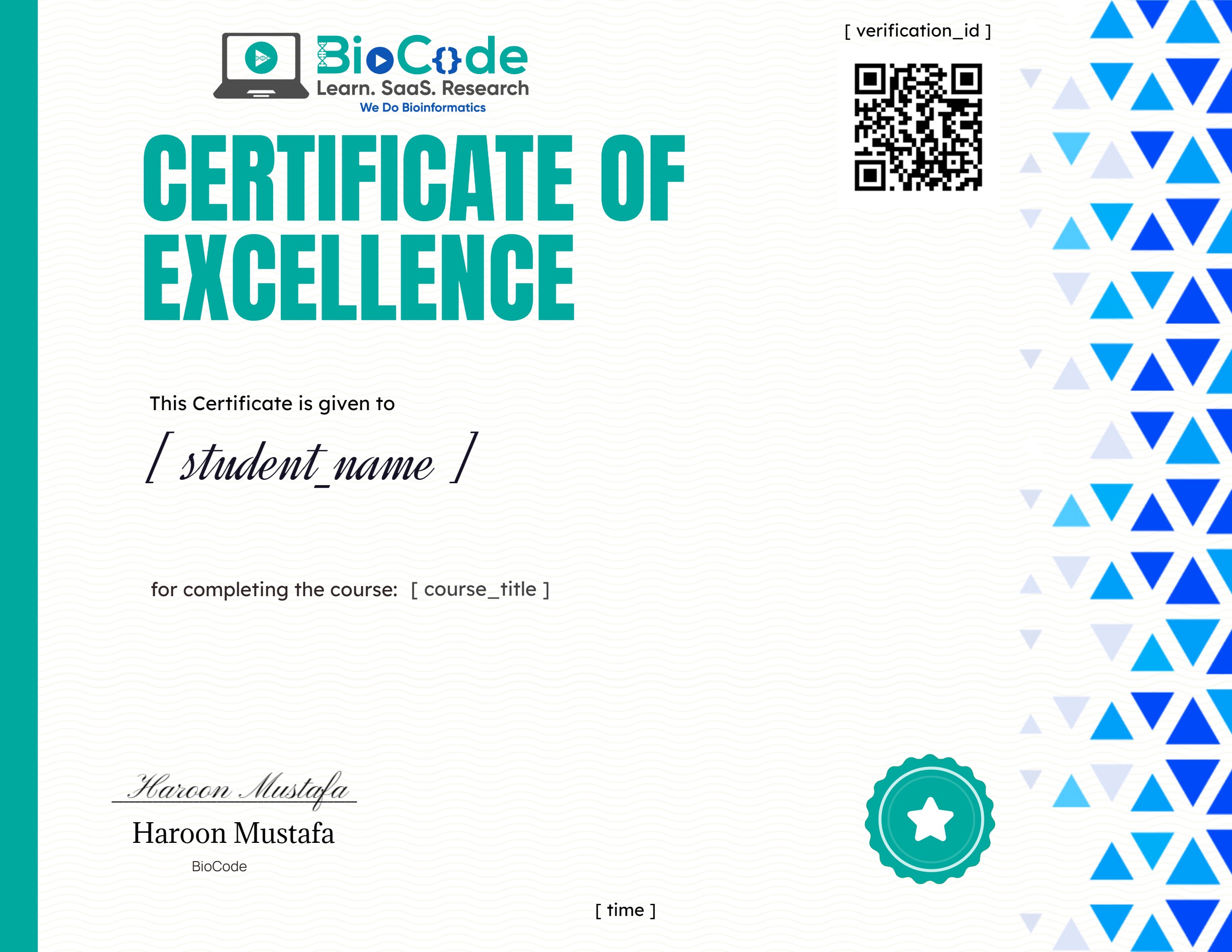Beginners Python For Bioinformatics
About Course
Everyday Bioinformatics analysis involves the extensive study and analysis of huge biological datasets. Programming languages like Python have made it easy to perform analysis on huge biological data sets. Python has become a staple in data science and bioinformatics, allowing bioinformatics data analysts and other professionals to use the language to conduct complex statistical calculations, create genomic data visualizations, build machine learning algorithms, manipulate and analyze genomic data, and complete other biological data-related tasks.
BioCode is offering a Beginners Python for Bioinformatics course in which you’ll learn various concepts related to writing customized scripts in Python language, Python data structures such as lists, strings, dictionaries and more. You’ll also learn how to read/write Bioinformatics files, work with loops and how to control the flow of your program and script.. The simple syntax and high-level data structures of Python makes it easy for computational biologists to develop programming skills, enabling them to interact with data programmatically and eventually develop code on their own.
This course is for absolute beginners in bioinformatics scripting and you don’t require any prior knowledge of scripting or even bioinformatics to get started with this course. Python is a great general-purpose scripting language that’s becoming the programming language of choice for most bioinformaticians. This course will also provide you with a great foundation and understanding of biological scripting in Python.
This course will include the following sections:
Section 1: Python
Description: This section will focus on making sure that the students gain an understanding about scripting in Python language and the various functions provided by Python that can be used to manipulate biological data.
Learning Outcomes: Upon completion of this section, students will be able to:
- Learn the Importance of Python in Bioinformatics.
- Understand Python Programming Language.
- Install Python Language.
- Discuss Comments in Programming Language.
- Perform Basic Input and Output Functions.
- Perform Mathematical Operations.
- Explain Strings Data Structure.
- Explain Dictionaries.
- Discuss Lists in Python.
- Describe Tuples.
- Explain Sets.
- Execute If-Else Conditions in Scripts.
- Use For Loop and Calculate the Molecular Weight of Proteins.
- Execute While Loop and Perform Biological Data Analysis.
- Read Files.
- Consolidate (merge) Multiple DNA and Protein Sequences into one FASTA File.
- Describe OS Module.
- Explain CSV Files.
- Explain Functions in Python.
- Use the “With” Statement in Python.
- Perform Error Handling.

Course Content
Python
-
Introduction to Python and its Installation
08:25 -
Comments
05:43 -
Basic Input and Output
15:38 -
Mathematical Operations
07:20 -
Strings
07:36 -
Dictionaries
10:57 -
Lists
28:48 -
Tuples
10:38 -
Sets
07:36 -
If-Else
09:19 -
For Loop and Calculation of Molecular Weight of Proteins
10:56 -
While Loop and Biological Data Analysis
09:37 -
Reading Files
13:45 -
Consolidate (merge) multiple DNA and Protein Sequences into one FASTA file
09:25 -
OS Module
31:47 -
CSV (A special kind of file in Bioinformatics)
08:42 -
Function
26:41 -
With
08:50 -
Error Handling
15:31
Evaluation
Earn a certificate
Add this certificate to your resume to demonstrate your skills & increase your chances of getting noticed.

Student Ratings & Reviews


